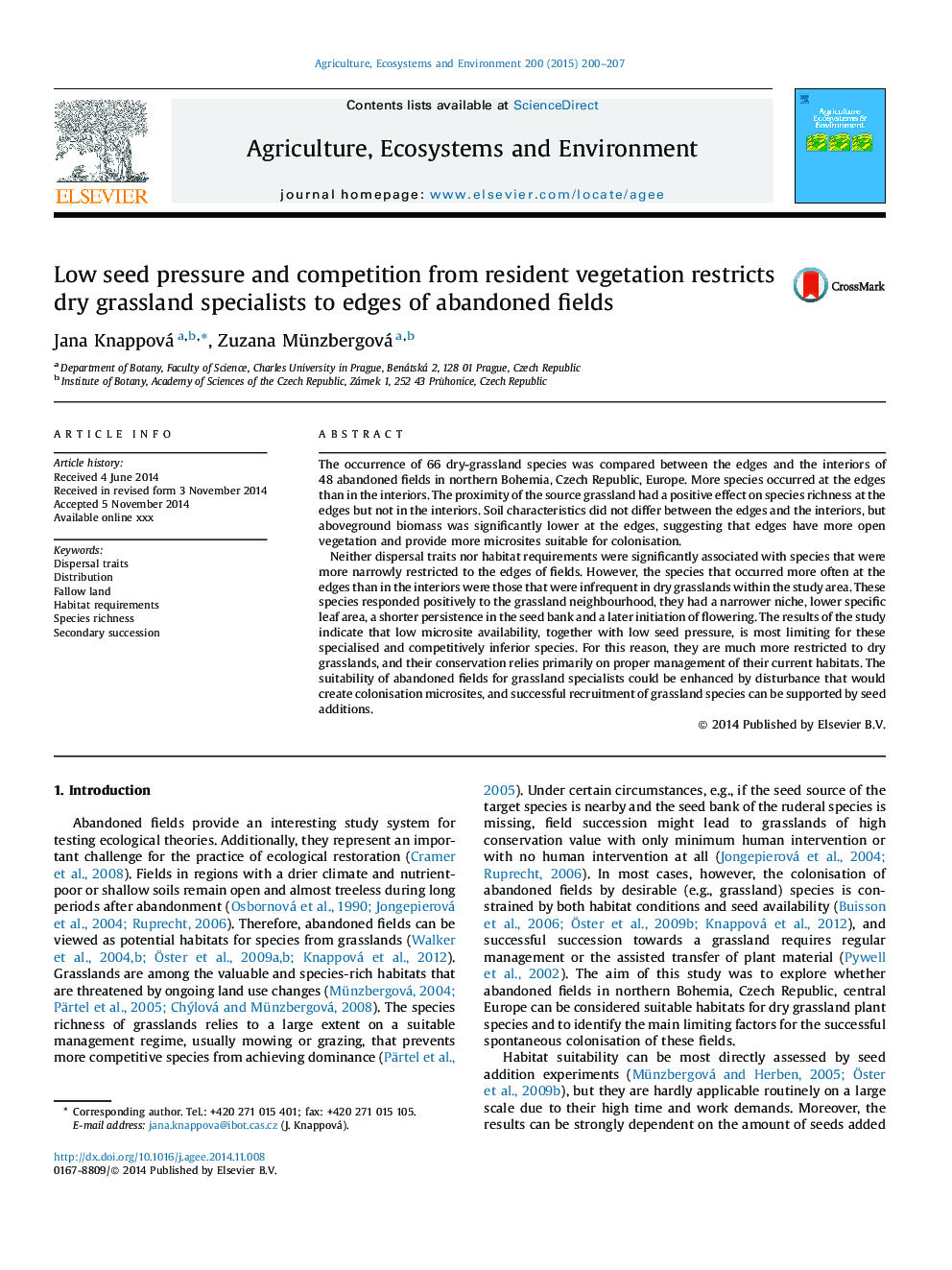| Article ID | Journal | Published Year | Pages | File Type |
|---|---|---|---|---|
| 8487816 | Agriculture, Ecosystems & Environment | 2015 | 8 Pages |
Abstract
Neither dispersal traits nor habitat requirements were significantly associated with species that were more narrowly restricted to the edges of fields. However, the species that occurred more often at the edges than in the interiors were those that were infrequent in dry grasslands within the study area. These species responded positively to the grassland neighbourhood, they had a narrower niche, lower specific leaf area, a shorter persistence in the seed bank and a later initiation of flowering. The results of the study indicate that low microsite availability, together with low seed pressure, is most limiting for these specialised and competitively inferior species. For this reason, they are much more restricted to dry grasslands, and their conservation relies primarily on proper management of their current habitats. The suitability of abandoned fields for grassland specialists could be enhanced by disturbance that would create colonisation microsites, and successful recruitment of grassland species can be supported by seed additions.
Keywords
Related Topics
Life Sciences
Agricultural and Biological Sciences
Agronomy and Crop Science
Authors
Jana Knappová, Zuzana Münzbergová,
